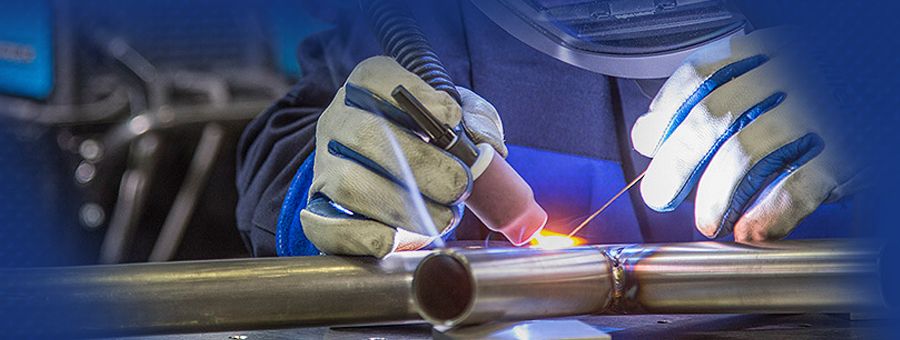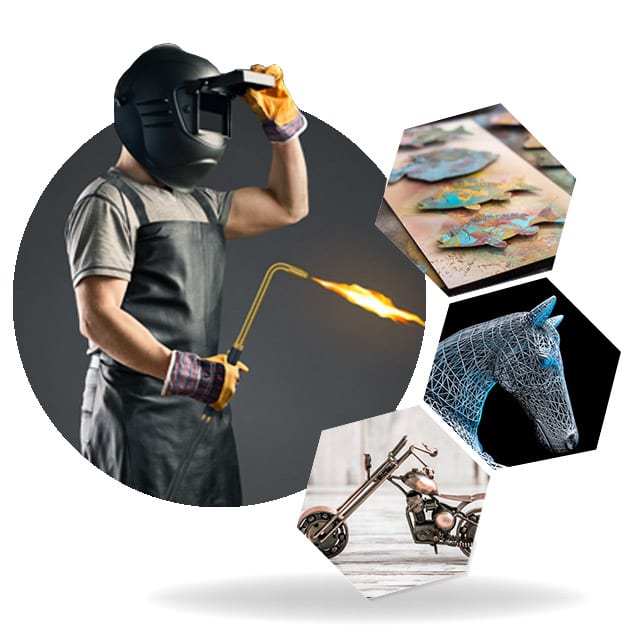Typical Welding Repair Work Issues and Exactly How to Address Them Effectively
Welding repair services typically encounter an array of issues that can endanger the honesty of the end product. Typical troubles include insufficient infiltration, porosity, and imbalance, to name a few. Each defect presents one-of-a-kind difficulties that need details strategies for resolution. Understanding these concerns is crucial for welders intending to enhance their outcomes and abilities. This discussion will certainly explore these usual welding repair issues and efficient techniques to address them.
Poor Penetration
Insufficient infiltration happens when the weld metal stops working to completely fuse with the base material, resulting in weak joints and possible architectural failings. This concern typically stems from insufficient heat input, wrong electrode angle, or improper welding speed. Welders might come across poor infiltration due to a mistake of the essential criteria for a particular product thickness or kind. In addition, contamination on the base product's surface can hinder efficient bonding, aggravating the trouble. To address inadequate infiltration, welders ought to ensure proper setups on their equipment and keep a clean work surface. Regular inspection of welds is recommended to recognize any kind of shortages early, permitting prompt adjustments and the prevention of compromised structural stability in bonded settings up.
Porosity
Porosity is a typical issue in bonded joints that shows up as small gas bubbles caught within the weld steel. This issue can jeopardize the integrity of the weld, causing minimized strength and possible failure under tension. Belgrade Welding. Porosity normally arises from contamination, moisture, or inappropriate welding techniques, which permit gases to get away right into the liquified weld swimming pool. To resolve porosity, welders ought to guarantee correct surface preparation, preserve a tidy functioning environment, and make use of suitable welding specifications. In addition, choosing the ideal filler product and securing gas can mitigate gas entrapment. Normal inspection and testing of welds can help determine porosity early, guaranteeing timely restorative activities are taken, thereby protecting the top quality and reliability of the bonded structure
Imbalance
Misalignment in welding can occur from various variables, including incorrect configuration and thermal development. Recognizing the origin is essential for efficient resolution. A number of improvement methods are available to realign elements and ensure architectural honesty.
Reasons for Misalignment
Welding imbalance usually originates from a variety of underlying issues that can endanger architectural honesty. One key cause is incorrect fit-up of elements prior to welding, which can bring about spaces and irregular surface areas. Variations in thermal expansion throughout the welding process can likewise lead to distortion, specifically if the products being signed up with have various coefficients of expansion. In addition, poor fixturing and clamping might fail to hold parts firmly in position, bring about motion during welding. Inadequately maintained tools, consisting of welding makers and tools, may present incongruities in the weld bead, further adding to misalignment. Driver mistake, stemming from insufficient training or experience, can likewise play a significant duty in producing misaligned welds.

Adjustment Methods Available
Attending to misalignment effectively needs a mix of restorative techniques tailored to the particular concerns available. One typical approach is the usage of components or jigs to hold elements in the right position during welding, ensuring constant positioning. In addition, pre-heating the materials can help in reducing distortion and improve fit-up. For significant imbalance, mechanical adjustment methods, such as using hydraulic jacks or clamps, can be employed to fix the setting before welding. Post-weld warmth therapy might likewise be required to ease tensions created by imbalance. Cautious inspection and modification throughout the arrangement phase can protect against misalignment issues from coming to be substantial problems, promoting a smoother welding procedure and improving overall structural integrity.
Distortion
Distortion is an usual challenge in welding that can develop from various aspects, consisting of uneven heating & cooling. Comprehending the reasons for distortion is important for implementing efficient prevention methods. Addressing this issue not just enhances structural integrity however also enhances the total top quality of the weld.
Root causes of Distortion
When based on the intense warm of welding, materials frequently go through modifications that can result in distortion. This phenomenon mainly occurs from thermal growth and tightening throughout the welding procedure. As the weld location warms up, the product increases; upon air conditioning, it acquires, which can produce internal stress and anxieties. On top of that, irregular heating across a workpiece can exacerbate these tensions, causing warping or flexing. The sort of product additionally plays a substantial function; steels with varying thermal conductivity and coefficients of development might react in different ways, causing unforeseeable distortions. Bad joint design and poor fixturing can contribute to misalignment during welding, raising the probability of distortion. Recognizing these reasons is important for reliable welding fixing and prevention strategies.
Prevention Techniques
Reliable avoidance strategies for distortion throughout welding concentrate on controlling warmth input and making certain correct joint design. Preserving a consistent warmth input helps to minimize thermal development and tightening, which can lead to distortion. Making use of strategies such as preheating the workpiece can also decrease the temperature level gradient, advertising uniform home heating. Additionally, selecting ideal joint layouts, such as T-joints or lap joints, can improve security and decrease stress focus. Applying proper fixturing to safeguard the workpieces in position even more help in preserving alignment throughout the welding procedure. Staggered welding series can distribute warm more equally, avoiding local distortion. By using these techniques, welders can substantially decrease the possibility get more info of distortion and improve the general quality of their welds.
Breaking
Cracking is a common concern run into in welding fixings, typically arising from various factors such as inappropriate cooling prices, material option, or insufficient joint preparation. The incident of fractures can considerably jeopardize the integrity of the weld, leading to potential failures throughout operation. To address this concern, welders must initially evaluate the source, making certain that products work and suitably selected for the details application. Furthermore, regulating the air conditioning price throughout the welding procedure is crucial; quick air conditioning can generate tension and cause splitting. Correct joint style and preparation additionally add to reducing the threat. Applying these strategies can boost weld high quality and sturdiness, eventually decreasing the likelihood of breaking in ended up weldments.

Incomplete Combination
A significant concern in welding repairs is incomplete fusion, which occurs when the weld steel does not adequately bond with the base material or previous weld passes - Belgrade Fabrication. This flaw can result in weaknesses in the joint, potentially endangering the integrity of the bonded framework. Factors adding to insufficient fusion include inadequate heat input, inappropriate welding technique, and contamination of the surfaces being joined. To address this concern effectively, welders must ensure correct pre-weld cleansing and surface prep work, along with change their welding criteria to achieve adequate penetration and combination. Regular assessment throughout the welding process can also aid determine incomplete fusion early, enabling timely corrective actions to boost the total quality of the weld
Overheating
While welding repair services can improve structural honesty, overheating offers a significant difficulty that can cause product degradation. Excessive warmth throughout welding can change the mechanical buildings of metals, resulting in lowered toughness, enhanced brittleness, and bending. This phenomenon is specifically vital in high-stress applications where architectural integrity is paramount. Identifying overheating can include visual examinations for discoloration or distortion, in addition to monitoring temperature during the welding procedure. To minimize the threats connected with getting too hot, welders need to employ suitable strategies, such as controlling warmth input, changing traveling rate, and utilizing appropriate filler materials. In addition, executing pre- and post-weld heat treatments can aid recover material homes and improve the total quality of the fixing, making certain long-lasting performance and security.
Often Asked Inquiries
What Are the Usual Signs of a Welding Defect?

Just How Can I Check My Welds for Quality?
To examine welds for high quality, one can utilize aesthetic inspections, ultrasonic testing, and radiographic approaches. Each strategy guarantees architectural stability, recognizes problems, and verifies adherence to defined standards, eventually boosting the reliability of the welded joints.
What Security Preventative Measures Should I Take While Welding?
When welding, one need to prioritize safety by using ideal personal protective devices, making certain correct air flow, protecting flammable materials away, keeping a tidy work area, and understanding environments to avoid accidents and injuries.
Can I Repair a Weld Without Remodeling the Entire Joint?
Repairing a weld without redesigning the whole joint is feasible, depending upon the damages (Fabrication). Strategies such as grinding, adding filler product, or utilizing a welding process can properly attend to particular flaws while preserving the bordering structure
What Tools Are Crucial for Reliable Welding Repair Works?
Necessary tools for efficient welding repair work consist of a welding machine, cord brush, mill, protective gear, clamps, and filler materials. Each tool plays an important role in guaranteeing quality and safety and security throughout the repair process. Porosity normally occurs from contamination, dampness, or incorrect welding strategies, which permit gases to leave right into the liquified weld pool. Poorly kept tools, consisting of welding makers and devices, may introduce inconsistencies in the weld grain, more contributing to imbalance. When subjected to the intense warmth of welding, products typically undertake adjustments that can lead to distortion. Cracking is an usual concern run into in welding fixings, typically resulting from various variables such as incorrect air conditioning prices, material choice, or inadequate joint prep work. A considerable issue in welding repair work is insufficient combination, which occurs when the weld metal does not sufficiently bond with the base material or previous weld passes.